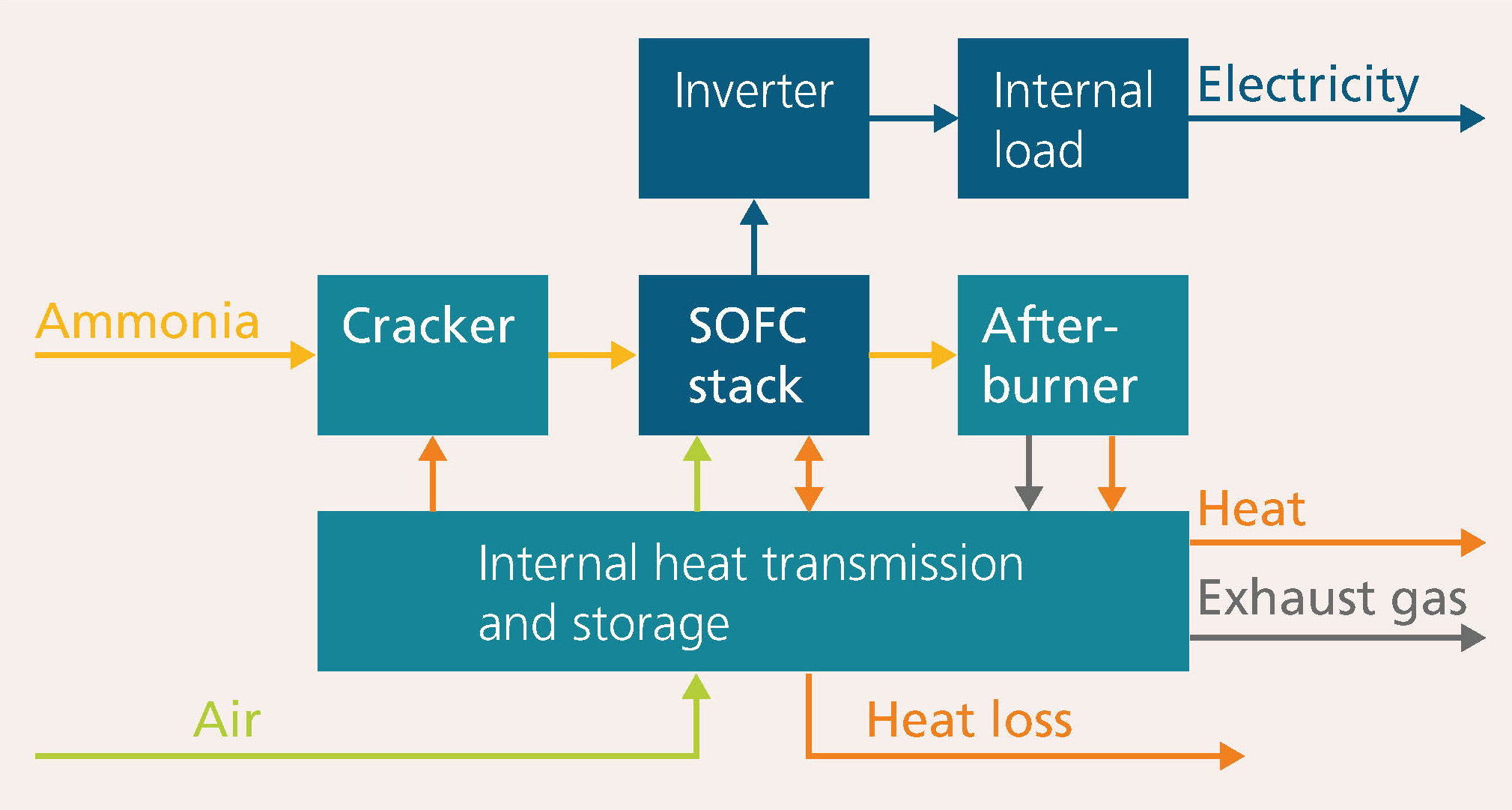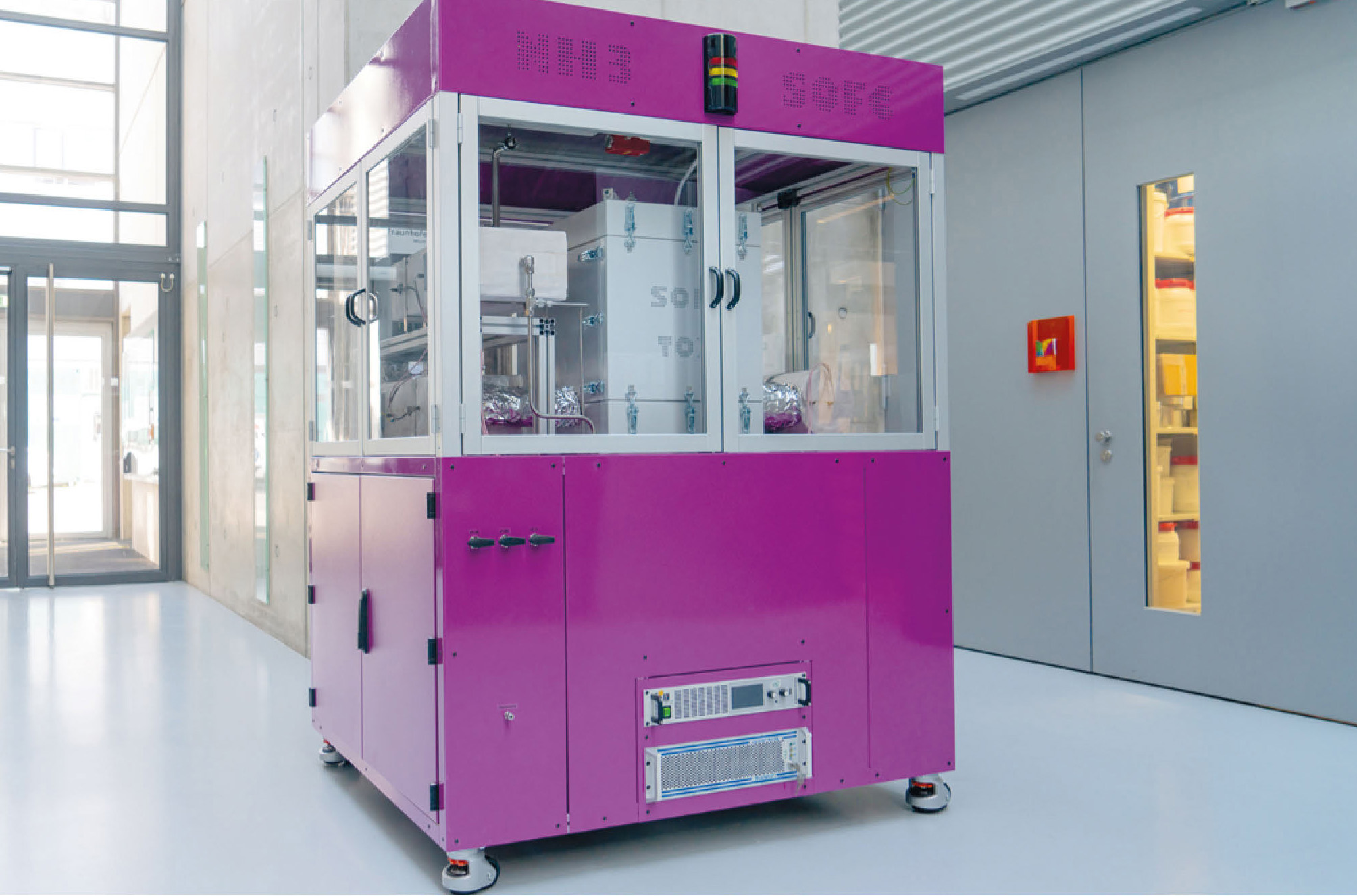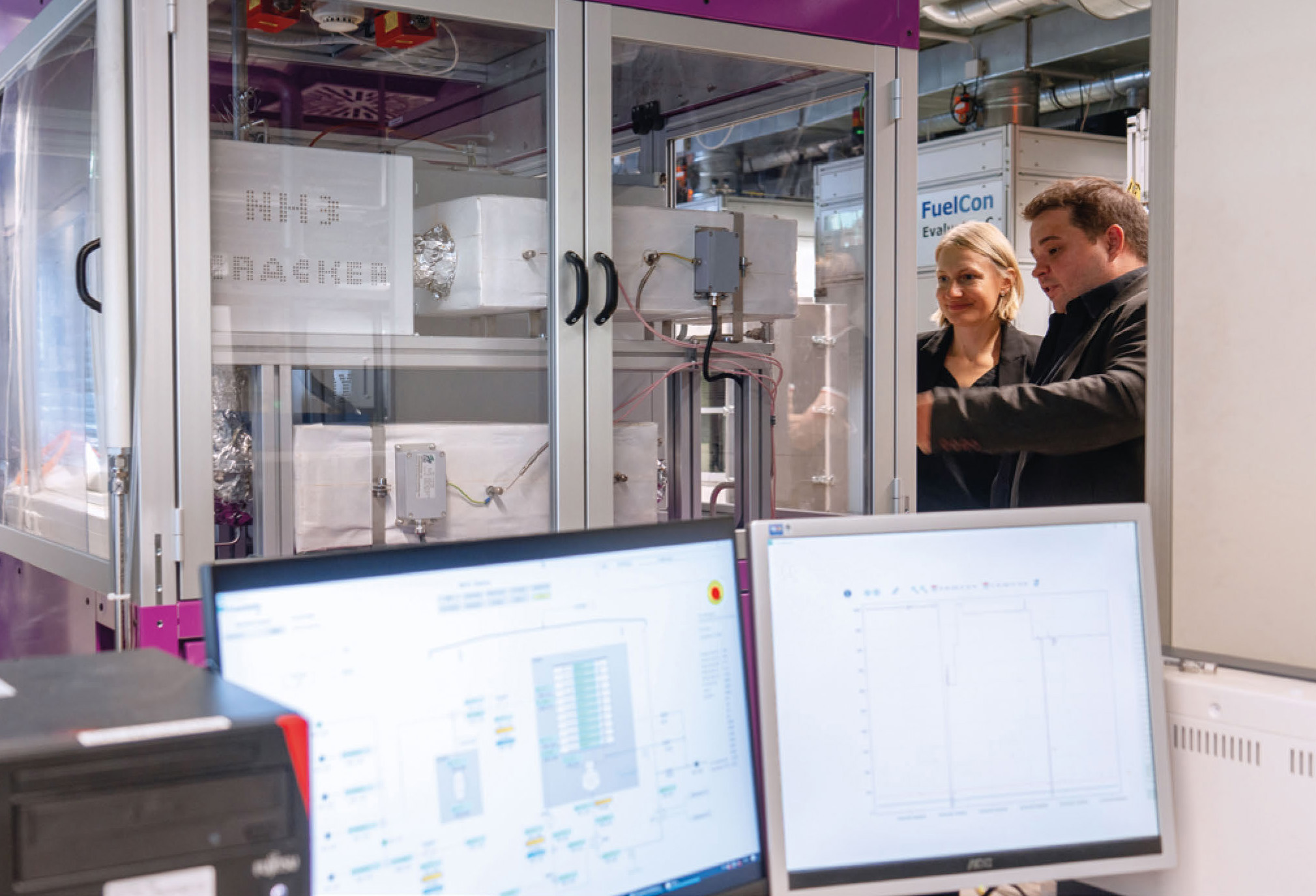
Ammonia for efficient, CO2-free power generation
Current research




Fraunhofer IKTS is developing systems for the efficient supply of electricity and heat based on solid oxide fuel cells (SOFC). Today, these devices for natural gas are mature and available on the market.
Carbon-free fuels, such as ammonia, are being considered to further reduce CO2 emissions during conversion to electricity and heat. For the energetic use of alternative fuels, SOFC systems must be adapted to these new fuels, which also present different boundary conditions compared with conventional systems. Particular attention must be paid to the fuel gas preparation (cracking), systems integration and thermal management in the systems.
Demonstration plant with IKTS stack technology
The first near-system ammonia SOFC demonstration plant in the 1 kWel power class was set up at Fraunhofer IKTS and has been operating successfully since August 2023. The test series looks at the behavior of the cracker, the heat management and the interaction with the SOFC stack. Gas analyses provide information about the degree of conversion of the ammonia under different cracker conditions and its influence on the overall process.
The demonstrator was able to demonstrate the basic suitability of SOFC systems for the use of ammonia as fuel. The performance of the SOFC system in ammonia operation is comparable to operation with hydrogen. The SOFC stack developed at Fraunhofer IKTS offers many degrees of freedom for efficient operation with ammonia thanks to its high operating temperatures and robust design. Even more efficient systems can be realized in the future through partial stack-internal cracking.
System optimization
The demonstration plant and the accompanying analyses have laid the foundation for the development of an integrated, optimized SOFC system based on ammonia. In the next step, the team will work on a greater thermal integration of the components and on balancing heat sources and sinks in the system in order to further increase the electrical efficiencies at system level. Customer-specific ammonia system developments in a wide performance range for different applications are therefore possible.